Foam backer boards: Lightweight, strong, and easy to install
Introduction
Veteran installers are aware that a suitable substrate is necessary prior to embarking on a flooring project. However, the same should apply when planning an interior wall installation. Numerous installers default to cement board as their preferred method for wall installations, but the use of foam boards for solid backing under wall tile has become more prominent for a few reasons:
- There is readily available education and training now.
- Foam boards are widely available and accessible in today’s market.
- Contractors have become more skilled using these systems and have shared their experiences.
- The light weight improves the ability to carry multiple boards on the jobsite.
- Less materials are needed to install the boards.
- Foam boards are easier to cut and manipulate than other backing materials.
Years of successful installations and word of mouth have led to the rapid growth of foam backers. Read on for some background on these and more benefits of foam boards to decide if you want to swap gypsum and cement boards with foam for your next project.
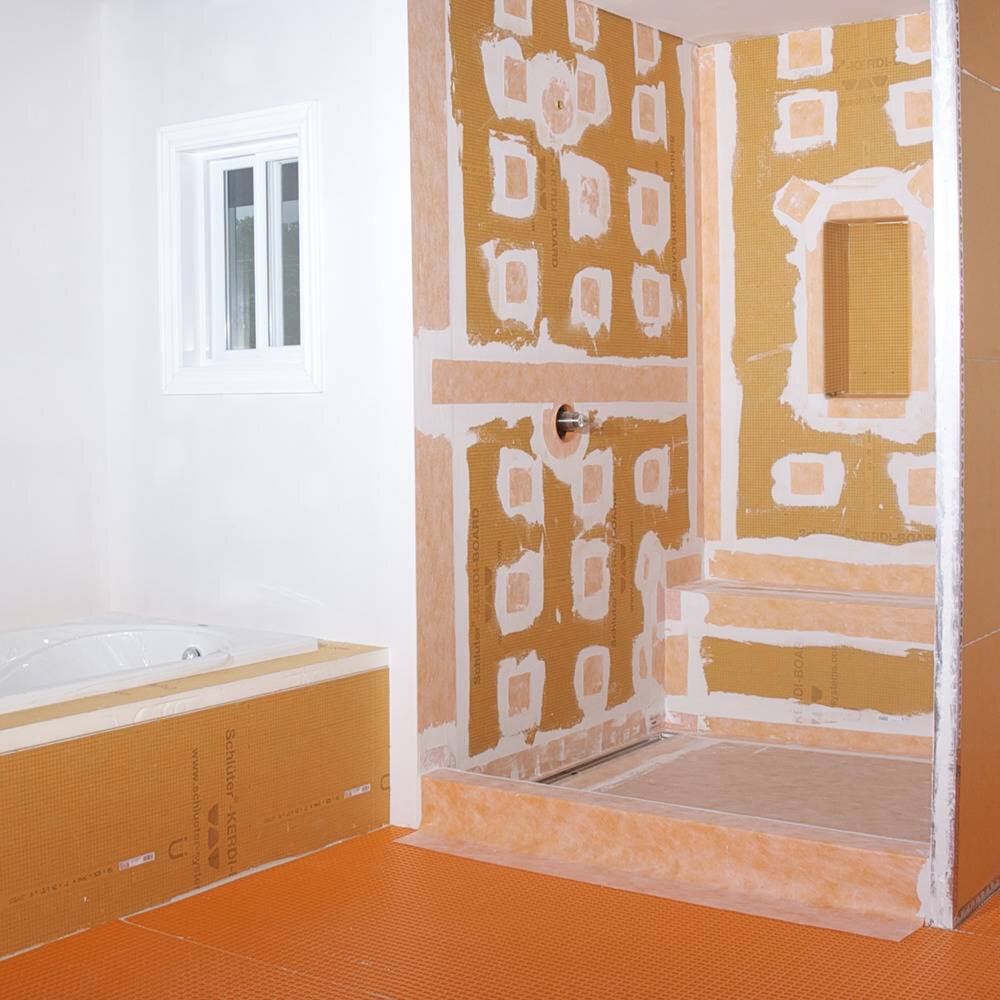


Benefits
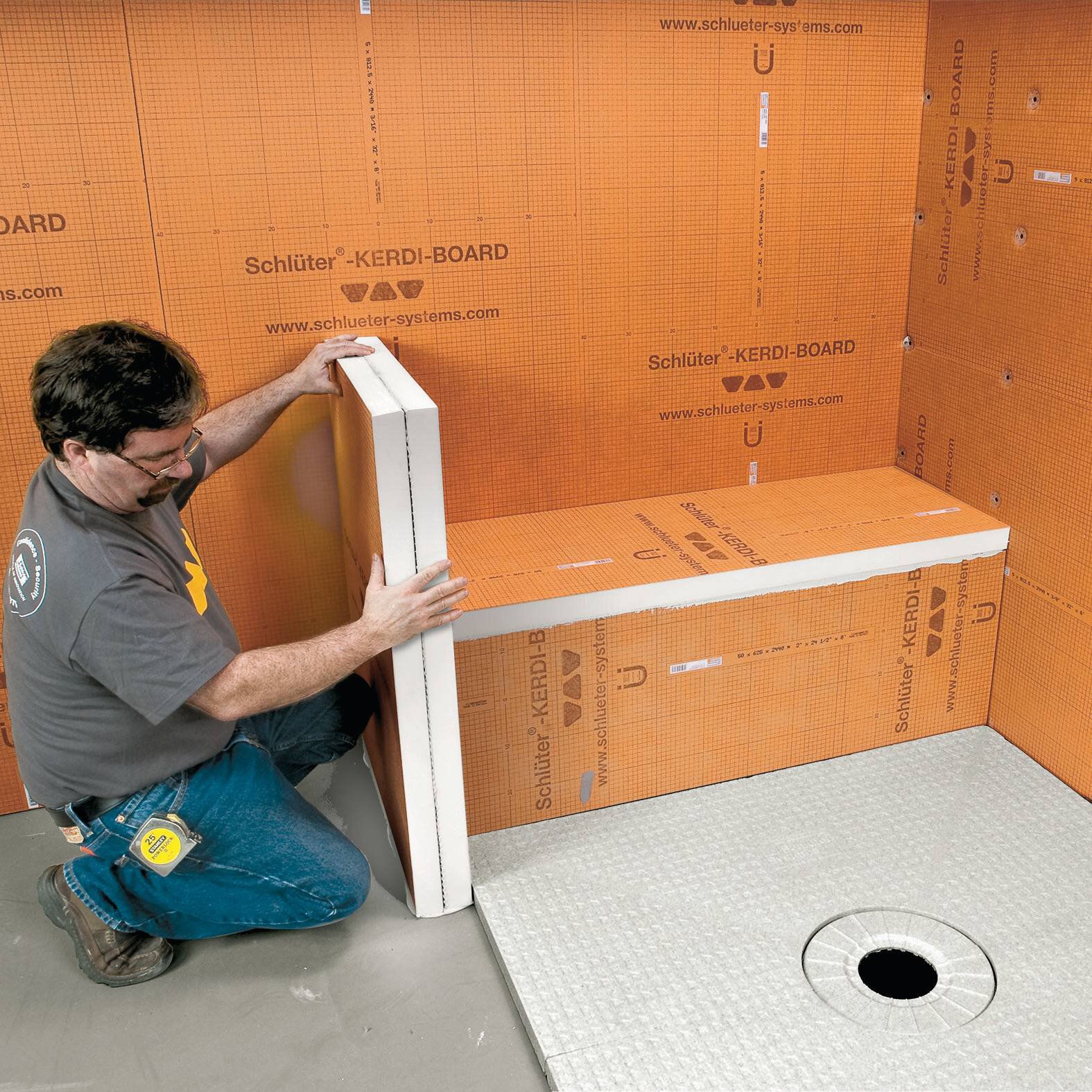


Contractors know all too well the burden of carrying cement backer boards up flights of stairs to prepare for installation. Several hundred pounds and multiple trips later, the boards are ready to be attached to the joists with installation materials strong enough to hold the cement boards. Usually, several able-bodied installers are needed to install these boards, which increases labor costs associated with the project. The risk of injury or damage is also apparent, as the heavy cement boards could potentially fall and hit someone or something when transporting around the jobsite or during installation. Alternatively, floating walls with mortar is messy and time consuming. By comparison, foam boards are lightweight and do not require multiple installers to transport them around the jobsite, and several boards can be transported each trip. A typical, ½-inch thick 3-foot x 5-foot foam board weighs approximately 7.5 pounds, compared to 45 pounds for a similar size sheet of cement board. In the unlikely event that one of the foam boards falls, the risk of injury or damage is minimal (or nonexistent).
Although the foam boards are lightweight, they are sufficiently strong and can hold more weight than some may think. The density of the KERDI-BOARD foam is 2 pounds per cubic foot, which is more than adequate for the board to perform its function as designed. If using 2-inch KERDI-BOARD for a properly supported custom bench, for example, the bench will easily hold the weight of the tile covering, as well as a person of average height and weight.
Foam backer boards also require minimal materials to install to the existing substrate. Typically, foam boards are attached to wooden surfaces using the appropriate screws and washers every 12 inches, or they can be attached using an appropriate thin-set mortar, such as Schluter ALL-SET®, with a square or U-notched trowel. The boards are light enough to adhere to wood with either method, or a combination of both methods to ensure a more secure bond, and one installer can easily mount each board to the wall or studs instead of requiring multiple hands to hold and steady the boards, as with their cement counterparts.
Schluter’s KERDI-BOARD is a waterproof building panel, which provides a sense of comfort for shower applications when applying the KERDI-BOARD as the primary solid backing for such installations. The wall installation is fully waterproof when using KERDI-BOARD along with waterproofing components, such as KERDI-BAND and KERDI-KERECK at seams, corners, and connections. Along with being waterproof, the boards are thermally insulating, and the thicker the board, the more R-value (thermal resistance value) the board provides. For example, Schluter’s 2-inch KERDI-BOARD panel provides an R-value of 9.1, which was determined according to ASTM C518, when used as solid backing and installed according to manufacturer’s recommendations.
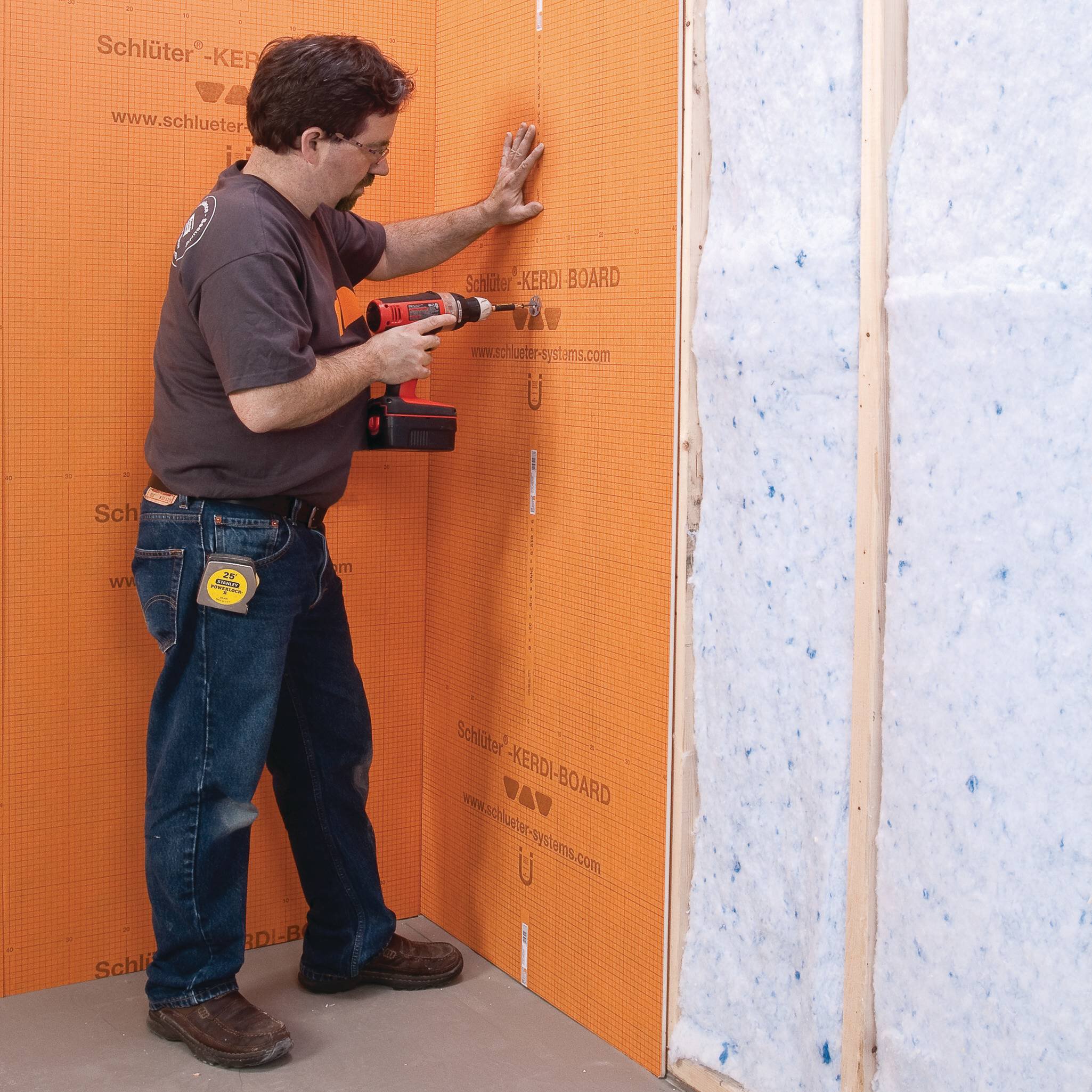


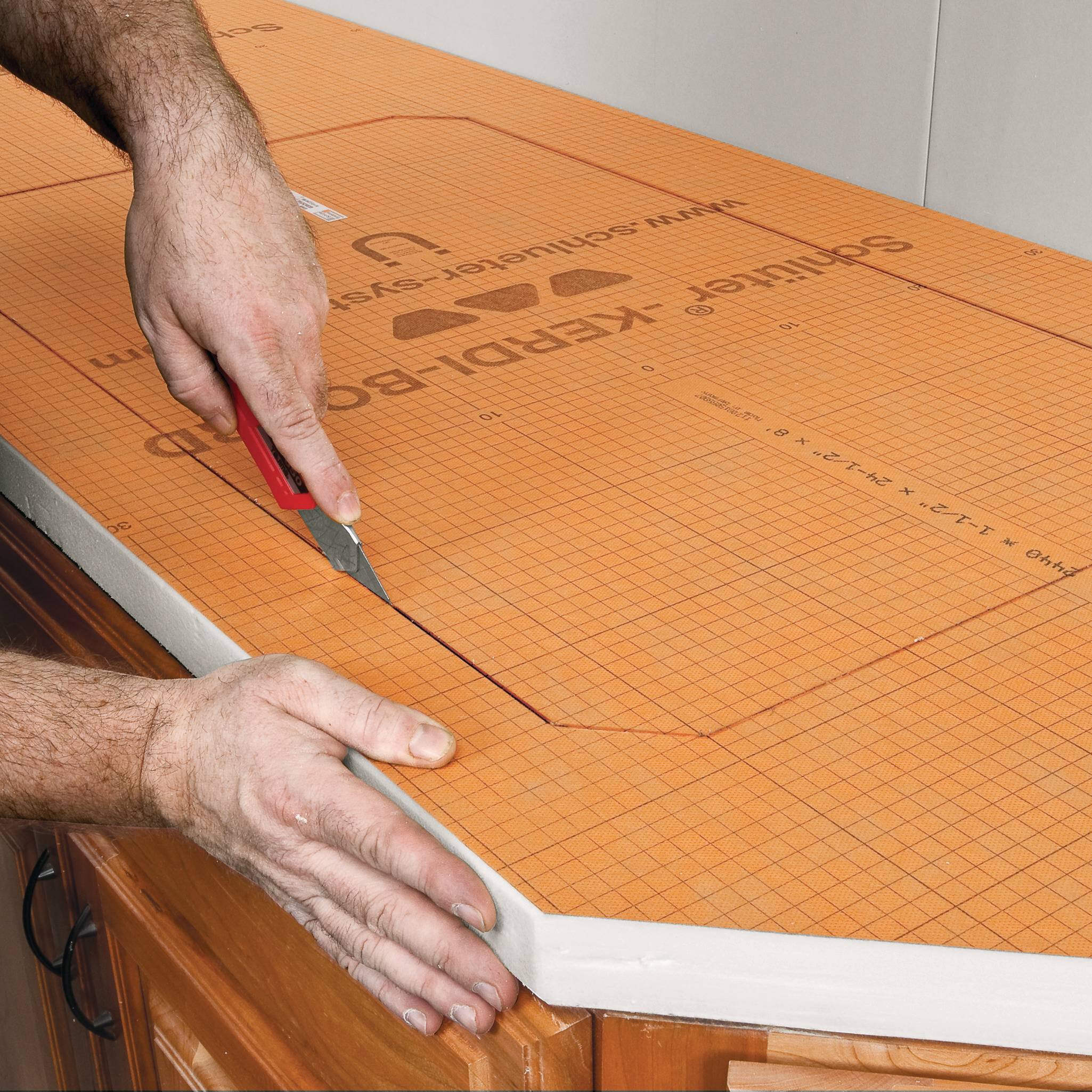


Cutting foam boards is also much simpler than cutting backerboards made of other materials, such as gypsum or concrete, since the foam is lightweight and composed of extruded polystyrene (EPS) foam. For installations that require it, the boards can be sized appropriately using a utility knife, which installers generally have available in their pockets (or at least in their vehicles). Another huge benefit of foam boards is that they don’t contain cement or fiberglass, which eliminates the potential of being exposed to harmful dust particles during cutting and installation. For proper instructions on cutting foam boards, such as the Schluter®-KERDI-BOARD, refer to Schluter’s KERDI-BOARD technical data sheet.
The function of extruded polystyrene foam boards is not limited to strictly providing solid backing for wall tile. These foam-board sheets can also be used to build custom benches, shelves, shower niches, and even vanities, to name just a few.
New Foam Board Standard
The exciting news in the world of standards is that there is now a standard available that permits the inclusion of foam backer boards as alternatives to backer boards composed of other materials. The new standard, ANSI A118.18, states that cementitious-coated extruded polystyrene foam backerboard, such as Schluter’s KERDI-BOARD (when coated with appropriate thin-set mortar), is a suitable replacement for glass mat gypsum backing panels (ASTM C1178), fiber-reinforced gypsum panels (ASTM C1278), non-asbestos fiber-cement backer boards (ASTM C1288 or ISO 8336, Category C), and non-asbestos fiber mat reinforced cementitious backer units (ASTM C1325) when used as a backer for wall tile in tub and shower areas. Building codes and specifications that recognize these other materials can now reference ANSI A118.18 when foam boards are desired. For more information on the new standard and other beneficial literature on this and other topics, refer to the 2024 TCNA Handbook for Ceramic, Glass, and Stone Tile Installation.
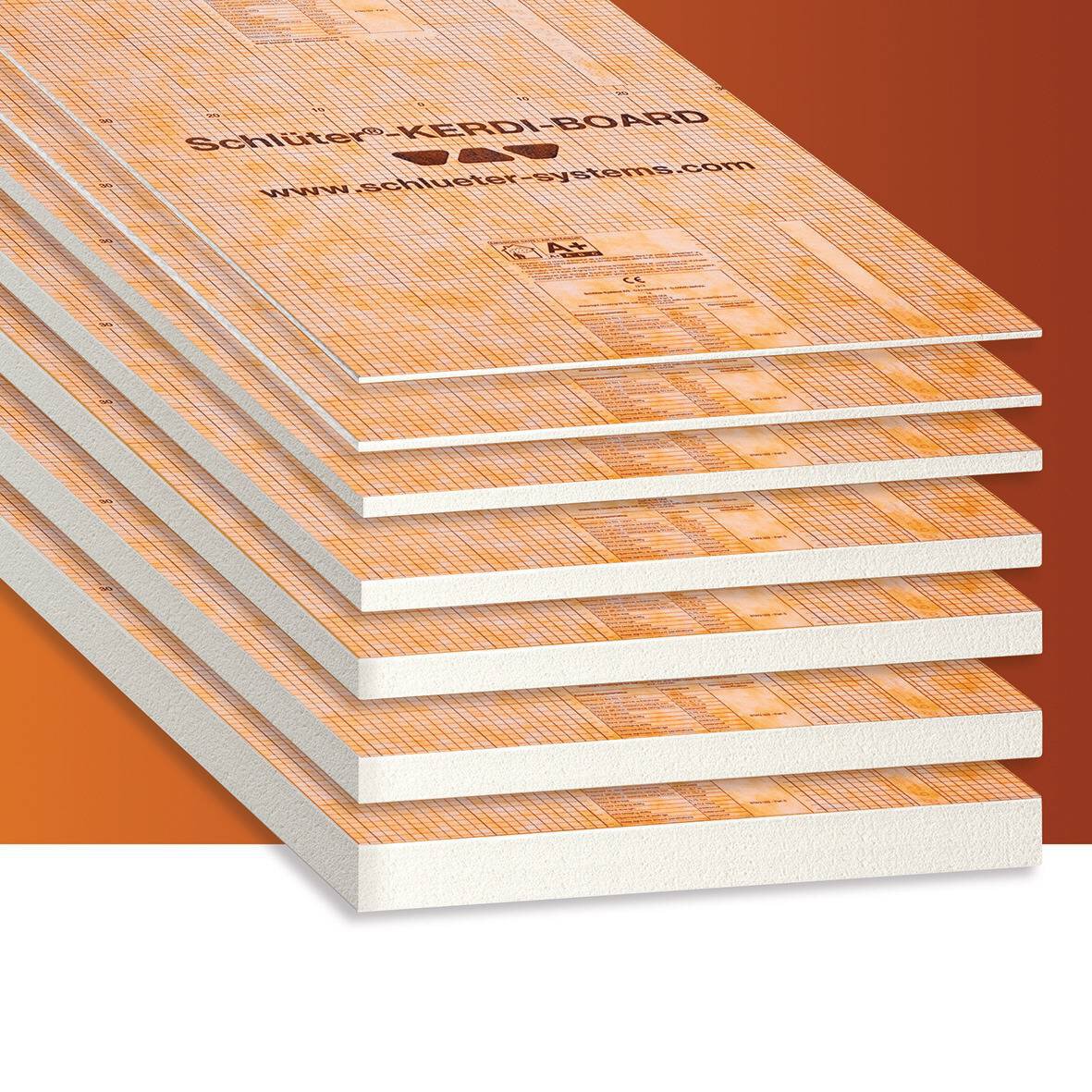


Summary
Although cement or gypsum boards have historically been the most widely used materials when requiring solid backing for interior installations, extruded polystyrene foam boards are now readily available to use as an easier and safer alternative. Foam boards are lightweight, while providing ample strength for numerous applications, require fewer materials to install, and are easy to cut to size for applications that require it. The EPS foam also provides waterproofing capabilities for shower installations, thermal insulation, and doesn’t create harmful dust when cut. Along with the list of benefits, there is now an ANSI standard (A118.18) that permits the use of foam as solid backing for shower area installations, which provides peace of mind for hesitant installers.